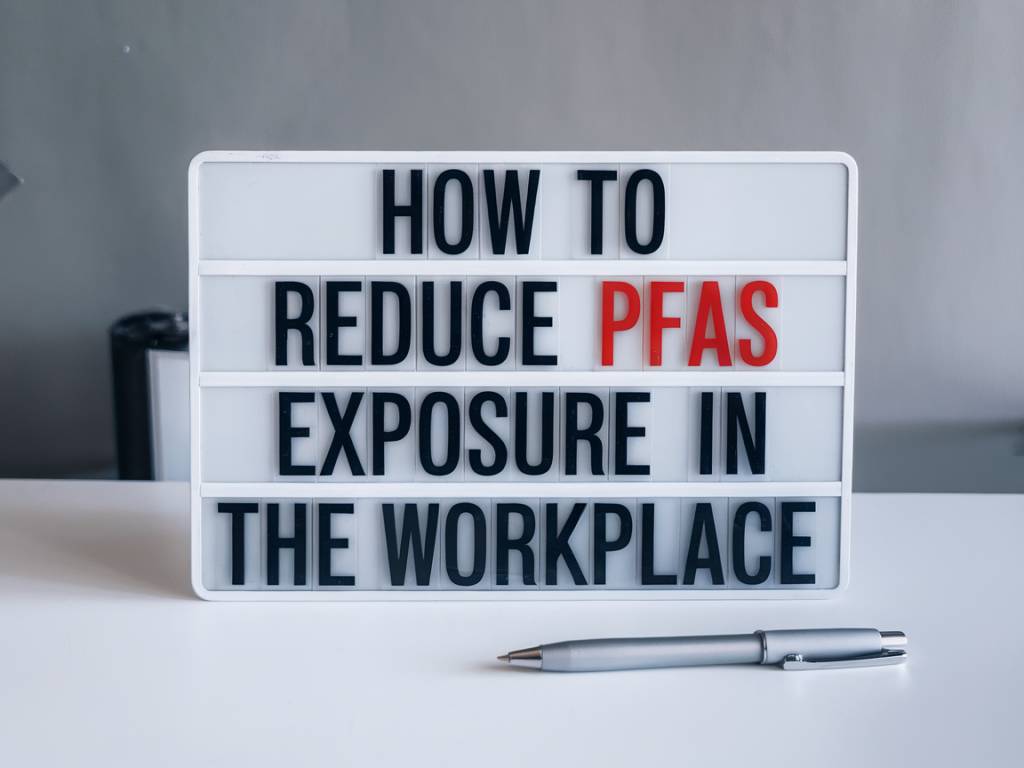Understanding PFAS: The Invisible Workplace Threat
In the realm of workplace safety, some dangers lurk invisibly, silently affecting our health. Among these stealthy threats are PFAS, or per- and polyfluoroalkyl substances. Dubbed the « forever chemicals, » PFAS are synthetic compounds used in a myriad of industrial processes due to their resistance to heat, water, and oil.
However, what makes PFAS invaluable in manufacturing also poses significant health risks. Can we truly escape their grasp in our workplaces, and what measures can we take to protect ourselves and our colleagues? Journey with me as we uncover the secret life of these pervasive substances.
The Hidden World of Workplace PFAS Exposure
Imagine walking into your workplace every day, not realizing the potential chemical cocktail that might be affecting your health. PFAS can be found in environments where they’re either directly used or inadvertently released. Industries such as manufacturing, firefighting, or even office environments with stain-resistant treatments on furniture might harbor these substances.
Once inside the body, PFAS attach themselves to proteins in blood, liver, or kidneys, accumulating over time and potentially causing adverse health effects. Commonly associated issues include hormonal disruption, immune system impairment, and increased cholesterol levels. It’s a sobering reality that urges action and awareness.
Strategies to Reduce PFAS Exposure at Work
Reducing exposure to PFAS in the workplace needs a collective effort focusing on informed decisions and proactive measures. Here are some effective strategies to consider:
- Implementing Safer Alternatives: Opt for products and processes that don’t utilize PFAS. Fortunately, many companies today are developing PFAS-free alternatives that perform just as efficiently.
- Routine Environmental Monitoring: Regularly test for PFAS levels in the workplace. It’s akin to having a smoke detector—it doesn’t stop the fire but gives you an early warning.
- Personal Protective Equipment (PPE): Equip employees with appropriate PPE to reduce direct exposure, especially in high-risk industries like firefighting and chemical manufacturing.
- Ventilation Systems: Ensure workplaces are well-ventilated to minimize airborne PFAS particles’ accumulation.
- Training and Education: Conduct regular training sessions for employees to stay informed about PFAS risks and safe handling practices. Awareness is the first step towards prevention.
Regulatory Landscapes: Navigating the Complex World of PFAS Policies
While individual initiatives are vital, the broader framework of public health policies plays an instrumental role in managing PFAS exposure. Regulatory bodies across the globe are grappling with how to best control and limit PFAS in environments, leading to an evolving landscape of regulations and standards.
For instance, the European Union has taken progressive steps towards banning specific PFAS chemicals. In the US, the Environmental Protection Agency (EPA) has proposed actions to limit certain PFAS in drinking water. Keeping abreast of these policy changes can guide workplaces in compliance and adopting safer practices.
Concrete Steps Towards a PFAS-Free Workplace: Success Stories
While the road to a PFAS-free workplace may seem daunting, there are inspiring success stories to draw from. Consider the case of a forward-thinking manufacturing plant that shifted away from PFAS-laden processes entirely.
Not only did this transition result in safer conditions for its workforce, but it also led to an unexpected boost in employee morale and productivity. The change sparked a culture of innovation and safety-first thinking—an example that echoes far beyond the confines of that plant.
Curious about what spurred this transformation? It all started with a simple question posed at a safety meeting: « Are we truly doing everything we can to protect our team? » That question led to research, policy adjustments, and gradual shifts towards a healthier workspace.
Empowerment Through Knowledge and Action
The journey to reduce PFAS exposure in the workplace starts with understanding and acknowledging the problem. By fostering a culture of awareness and advocacy, employers and employees can collaboratively cultivate a safer work environment.
This mission not only protects immediate health but holds long-term benefits for future generations. After all, wouldn’t you agree that a healthier workforce is the backbone of a thriving society?
Armed with knowledge, let’s step forward with courage and commitment to diminish the shadow of PFAS in our workplaces. Remember, every small action counts, and together, we can create waves of change that echo across time.

